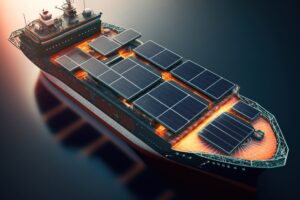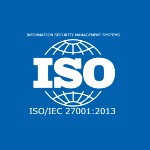China’s Wave of Change: Steering the Global Shift to Electric Ships
Posted by | Rauf Mammadov
From cargo vessels to ferries, electrified shipping is beginning to make waves in the maritime industry.
Global players such as Wartsila, Siemens AG, MAN Industries and General Electric are all getting in on the action. However, it is Chinese companies that are making real strides in the $14 billion electric ship market. As in the case with the adjacent automotive industry China is spearheading the shift towards these advanced technologies, especially battery electric vessels.
The maritime industry is undergoing a significant energy transition as it seeks to reduce emissions by embracing sustainable practices. Traditionally, ships have relied on fossil fuels, mainly diesel engines, contributing to greenhouse gas emissions. However, due to increasingly stricter IMO regulations, there is a growing shift towards cleaner energy sources, mainly liquified natural gas, liquefied petroleum gas, methanol, as well as hybrid propulsion systems. Although natural gas-based combustion engines or hybrid propulsion systems are effective in reducing carbon emissions, the adoption of more advanced renewable energy technologies such as fuel cell, solar, wind, and battery electric vessels.
China takes the lead

A container cargo ship powered by electricity with solar panels.
Chinese state issued a plan to curb ship and port pollution in 2020, urging comprehensive improvements in pollution prevention and acceleration of the green development of the shipping industry in its inland waterways, particularly in the Yangtze River Economic Belt. Since then, China has accelerated the adoption of electric vessels.
China currently has more than 190 battery electric ships, 40% of the global total, in its inland waterways, with 60 under construction or planned to be built.
According to the white paper on the Development of China Electric Ship Industry (2021), the penetration rate of lithium batteries in ships is expected to reach 18.5% 2025. In May 2022, China commissioned its first battery-powered cruise ship, Chang Jiang San Xia 1.
Several factors contributed to China’s success in the faster adoption of electric battery technologies in shipping:
- China’s government has played a pivotal role in driving this maritime revolution. Through favorable policies, financial incentives, and research funding, the government has encouraged innovation, incentivized shipowners to adopt electric vessels, and facilitated the development of sustainable shipping solutions. These measures have created a conducive environment for companies to invest in and embrace electric battery-powered shipping.
- The country’s advancements in lithium-ion batteries have resulted in improved energy storage capabilities, longer range, and increased power outputs. These developments have enabled electric ships to carry substantial cargo loads while maintaining optimal performance.
- Presence of vast inland waterways and the importance of the rivers for the national GDP were equally important contributing factors. China has more than 75,000 miles of navigable inland waterways, one of the most extensive systems in the world. The Yangtze River region accounts for nearly 50% of the country’s GDP and population and has formed a mega-port system, with riverports as the mainstay and including seaports and land ports, connected by high-grade waterways and ground channels.
China’s Impact
While China’s success in the electric vessel industry will contribute to the global push toward sustainable maritime transportation, there are some negative implications worth considering. Firstly, it threatens the competitiveness of European and U.S. marine engine OEMs, who are still trying to establish their footing in the emerging sector. Additionally, as in the case of the electric vehicle market, China controlling a large portion of the global electric ship market will further strengthen Beijing’s influence over the supply chain. Furthermore, while China’s rapid growth in the market helps combat climate change, it also raises environmental concerns given the country’s reliance on coal for power.
Tags: China, Disruption, Energy



















